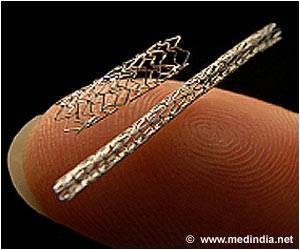Hybrid sirolimus-eluting stents with biodegradable polymer did not improve angiographic outcomes compared to everolimus-eluting stents with durable polymer.

‘Treating chronic total occlusions can be challenging due to their long lengths and the presence of greater degrees of calcium.’





Findings from the PRISON IV trial were reported at the 28th annual Transcatheter Cardiovascular Therapeutics (TCT) scientific symposium. Sponsored by the Cardiovascular Research Foundation (CRF), TCT is the world's premier educational meeting specializing in interventional cardiovascular medicine. The study was also published in the Journal of the American College of Cardiology (JACC): Cardiovascular Interventions. "Treating chronic total occlusions can be challenging due to their long lengths and the presence of greater degrees of calcium. They often require long stents with high radial strength to maintain acute gain and to minimize late vessel recoil after percutaneous coronary intervention," said lead investigator, Koen Teeuwen, MD from St. Antonius Hospital in Nieuwegein, The Netherlands.
Between February 2012 and June 2015, a total of 330 consecutive patients with successfully recanalized native total or chronic total coronary occlusions were randomized to the hybrid sirolimus-eluting stent or the everolimus-eluting stent in two Belgian and six Dutch high-volume PCI centers.
Follow-up angiography was performed at nine months after the procedure. In addition, clinical follow-up was obtained during the hospital stay and at one, six, nine and 12 months.
The primary non-inferiority end point was in-segment late lumen loss assessed at nine months by angiography. Secondary angiographic end points included: in-stent late lumen loss, minimal lumen diameter, in-stent and in-segment percentage of diameter stenosis, binary restenosis and reocclusions at nine months. Secondary individual and composite clinical end points were clinically indicated target lesion revascularization/target vessel revascularization, myocardial infarction, death (cardiac and non-cardiac), stent thrombosis, target vessel failure, and major adverse cardiac events.
Advertisement
Clinical follow-up at 12 months was available in 99% of all subjects. Clinically indicated target lesion and vessel revascularization, target vessel failure and MACE were comparable between both groups. Two subjects in the SES group received non-clinical TLR with balloon angioplasty after observing severe stent strut malapposition with optical coherence tomography at nine months. There was only one probable or definite stent thrombosis in each stent group (0.7% vs. 0.7%; P=1.0).
Advertisement
Source-Eurekalert






